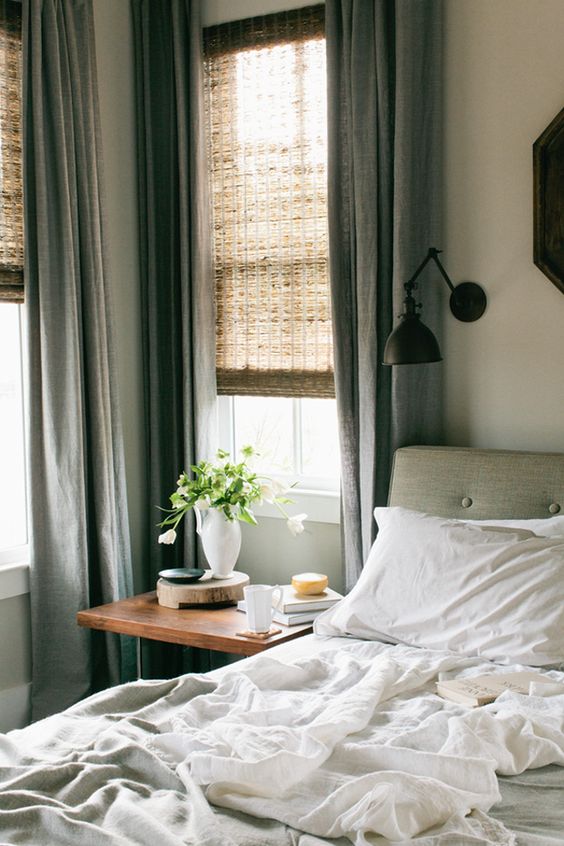There are times when some of us stop to look at a room in our homes and know there is something missing but can't quite put our fingers on it. If you've ever been stumped as to what that is, if you're tired of purchasing things for your home that don't seem to be doing the trick, read the following pointers. Every room should have at least one talking point, a pinch of curiosity, a conversation starter and something that makes the room feel unlike any other.
In my opinion, there are 5 elements that reign when you are considering what it takes to complete your room.
- Lighting
- Art
- Rug
- Balance
- Texture
LIGHTING
The right lighting can completely transform a room. Good lighting can take you from the bland and cool to warm and inviting in just one flick of a switch. You or your interior designer will need to determine what types of lighting are needed in each room- general or background lighting, accent lighting (picture lighting and spots), task lighting (workspaces), utility lighting (when lighting is required for security or safety reasons, ie. on a step or porch). It is important to be able to identify the need for artificial lighting in a room where natural light is scarce. When I walk into a space, I first determine the aspect of the room, the room's main theme and function, I find out at what times of the day it is used and for what purposes and by whom and I narrow down the lighting options from there. Your lighting can double as an ornamental piece or a work of art, which leads me to the next item...
ART
There are people who like to group all their pictures on one or several walls. Some prefer a more modern or minimalist approach using one large impactful piece. The majority of home owners lie somewhere between these two tastes, proudly grouping some collected and handed down pieces throughout the room, without crowding their wall space. An art collection takes time and should never be rushed. Invest in antique art, mix them with local artist's work and even throw some prints into the mix if they suit the scene. There are few rights or wrongs when it comes to mixing art. The right frame makes all the difference too so choose wisely. Of course, art comes in many forms. A sculpture or hand crafted piece can be quite striking when it is on show on its own. In a large group, sculptures can be lost and the eye can pass over them. If you have a piece that you want to stand out, either showcase it in its own spot or mix it with a group of pieces that are unified in their own right, so it stands out.
RUGS
An area rug serves a practical and decorative purpose. From a practical point of view, a rug will stop a wood floor from scratching under your furniture and will prevent your furniture from skating around the floor. It is soft underfoot for living rooms and bedrooms, for added cosiness and they're great where there are babies and young toddlers as it is soft under their little knees and elbows. From a design point of view, an area rug will anchor a room together, creating a zone and attracting your eye to the zone that the rug commands, all furniture resting upon upon it relies on its balance. A rug works wonders in open plan spaces as they help to define a particular area. I believe the phrase 'it really ties the room together' comes to mind here!
BALANCE
When the balance is off in a room, visitors can spot it straight away. Even to an untrained eye, a person will know in their subconscious that something is off. There may be one or two things dominating other pieces in a room, whether it's the 7 foot book case looming over your low balance furniture or your high-profile wing chair beside your stout nest of tables. Getting the balance right is one of the first things you should consider when purchasing furniture or styling a room. If you're stuck for a unifying colour scheme for your room, find a rug that will work with everything you have. It is important also to know that the balance between furnishings of different eras varies. An interior designer knows how best to work the balance of different pieces. You need to avoid having all your tall items on one side of the room, or the whole room will look 'lopsided'. The same can be said for strong colours and eye catching ornaments. French polished pieces very rarely marry well with unpolished, raw woods and pairing graceful Victorian curves with architectural angled furniture needs to be done with care and a thoughtful eye. Balance is not only limited to furnishings- it also commands the careful consideration of textures.
TEXTURE
No one room is complete without a mix of textures. Too few textures and a room can come across as cold or uninviting. Too many and the room can look messy or busy. It's about finding the right balance of textures, materials and finishes for you. It is with texture (and lighting and art) that you can really let your personality and the personalities of your family members shine through. You can easily and relatively affordably add texture through textiles. Whether it is with a country home style wool throw draped over a reading chair or a linen covered couch on a terracotta tiled floor, there needs to be added interest and a contrast between the basic elements in a room. Indoor plants and flowers are the most natural and simplest forms of texture to add to a room. Mix finishes- a mahogany chest beside linen curtains; a leather couch holding Kilim cushions, or a velvet stool sitting on a woven rug. It is important to include textures that intrigue you and your visitors, inviting you to touch and admire.
I hope you enjoyed this week's post on what I think are the five most important elements that complete a room. Please feel free to leave a comment if you have any feedback. If you need help on designing your interiors, contact me by emailing hello@ciaraeloise.com or on the telephone number below.
'Til next Friday,
Ciara Eloise.














